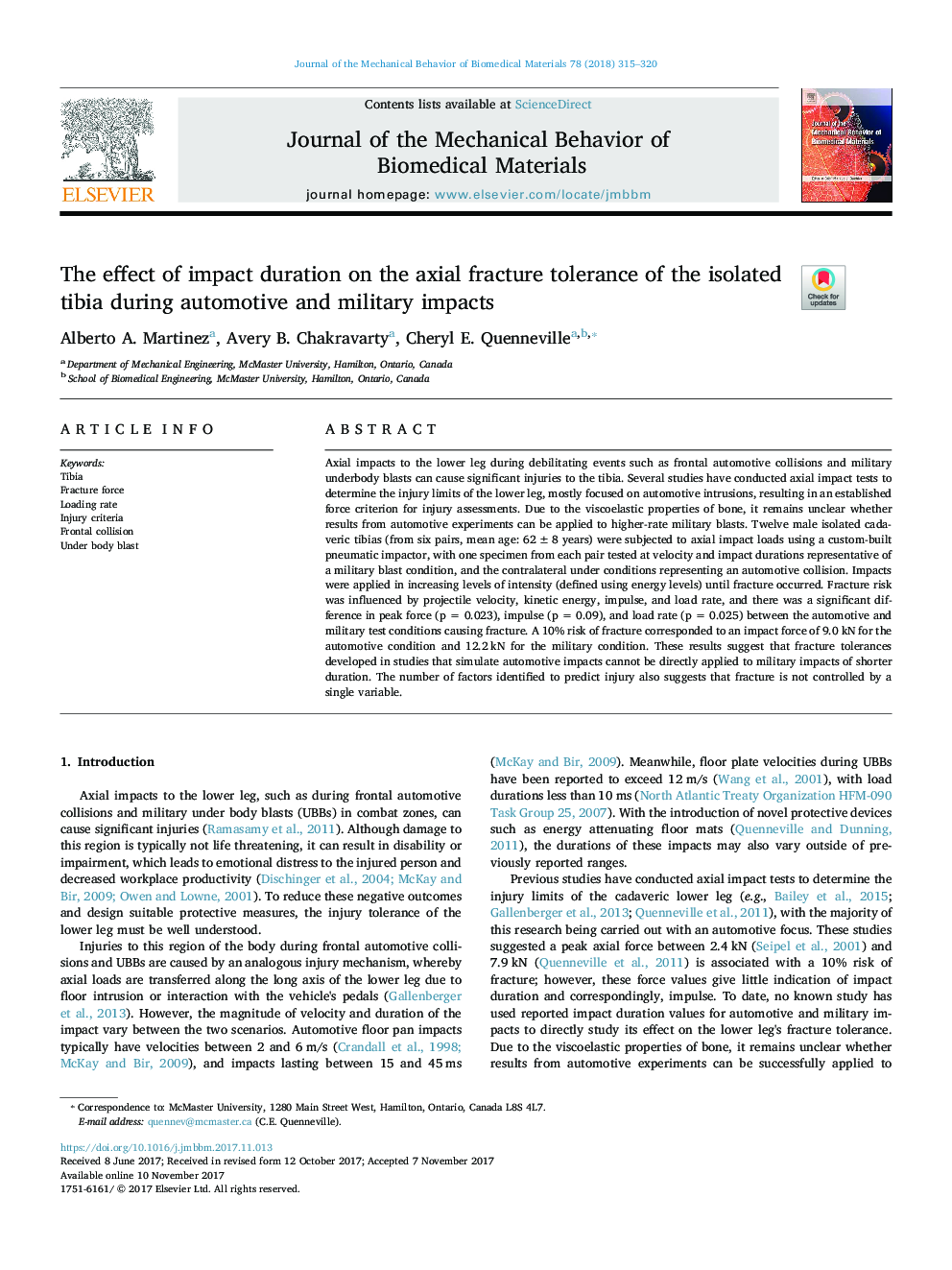| کد مقاله | کد نشریه | سال انتشار | مقاله انگلیسی | نسخه تمام متن |
|---|---|---|---|---|
| 7207325 | 1469067 | 2018 | 6 صفحه PDF | دانلود رایگان |
عنوان انگلیسی مقاله ISI
The effect of impact duration on the axial fracture tolerance of the isolated tibia during automotive and military impacts
ترجمه فارسی عنوان
تأثیر مدت زمان ضربه بر روی تحمل شکستگی محوری تیبیا جدا شده در اثر حمل و نقل خودرو و ارتش
دانلود مقاله + سفارش ترجمه
دانلود مقاله ISI انگلیسی
رایگان برای ایرانیان
کلمات کلیدی
تیبیا، نیروی شکستگی، نرخ بارگیری، معیارهای معیشت، برخورد پیشانی، تحت انفجار بدن،
موضوعات مرتبط
مهندسی و علوم پایه
سایر رشته های مهندسی
مهندسی پزشکی
چکیده انگلیسی
Axial impacts to the lower leg during debilitating events such as frontal automotive collisions and military underbody blasts can cause significant injuries to the tibia. Several studies have conducted axial impact tests to determine the injury limits of the lower leg, mostly focused on automotive intrusions, resulting in an established force criterion for injury assessments. Due to the viscoelastic properties of bone, it remains unclear whether results from automotive experiments can be applied to higher-rate military blasts. Twelve male isolated cadaveric tibias (from six pairs, mean age: 62 ± 8 years) were subjected to axial impact loads using a custom-built pneumatic impactor, with one specimen from each pair tested at velocity and impact durations representative of a military blast condition, and the contralateral under conditions representing an automotive collision. Impacts were applied in increasing levels of intensity (defined using energy levels) until fracture occurred. Fracture risk was influenced by projectile velocity, kinetic energy, impulse, and load rate, and there was a significant difference in peak force (p = 0.023), impulse (p = 0.09), and load rate (p = 0.025) between the automotive and military test conditions causing fracture. A 10% risk of fracture corresponded to an impact force of 9.0 kN for the automotive condition and 12.2 kN for the military condition. These results suggest that fracture tolerances developed in studies that simulate automotive impacts cannot be directly applied to military impacts of shorter duration. The number of factors identified to predict injury also suggests that fracture is not controlled by a single variable.
ناشر
Database: Elsevier - ScienceDirect (ساینس دایرکت)
Journal: Journal of the Mechanical Behavior of Biomedical Materials - Volume 78, February 2018, Pages 315-320
Journal: Journal of the Mechanical Behavior of Biomedical Materials - Volume 78, February 2018, Pages 315-320
نویسندگان
Alberto A. Martinez, Avery B. Chakravarty, Cheryl E. Quenneville,
